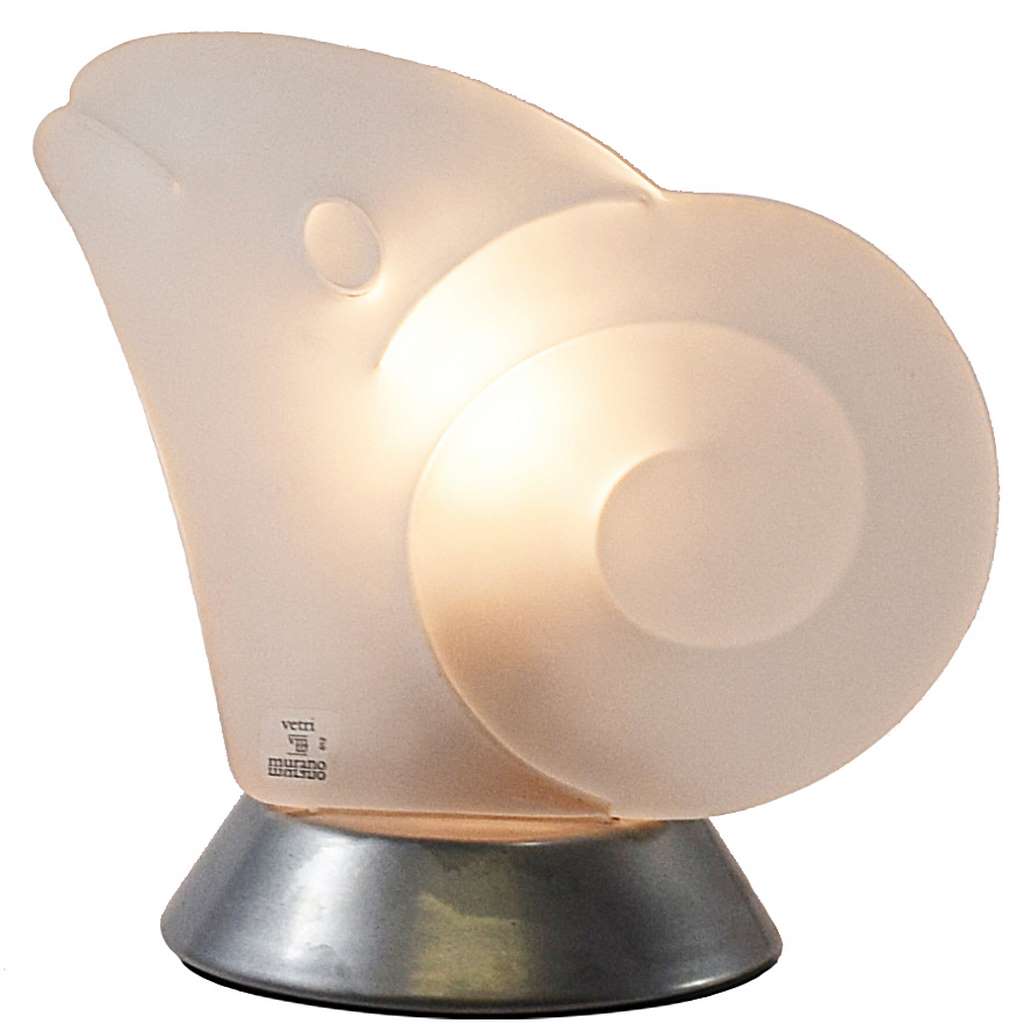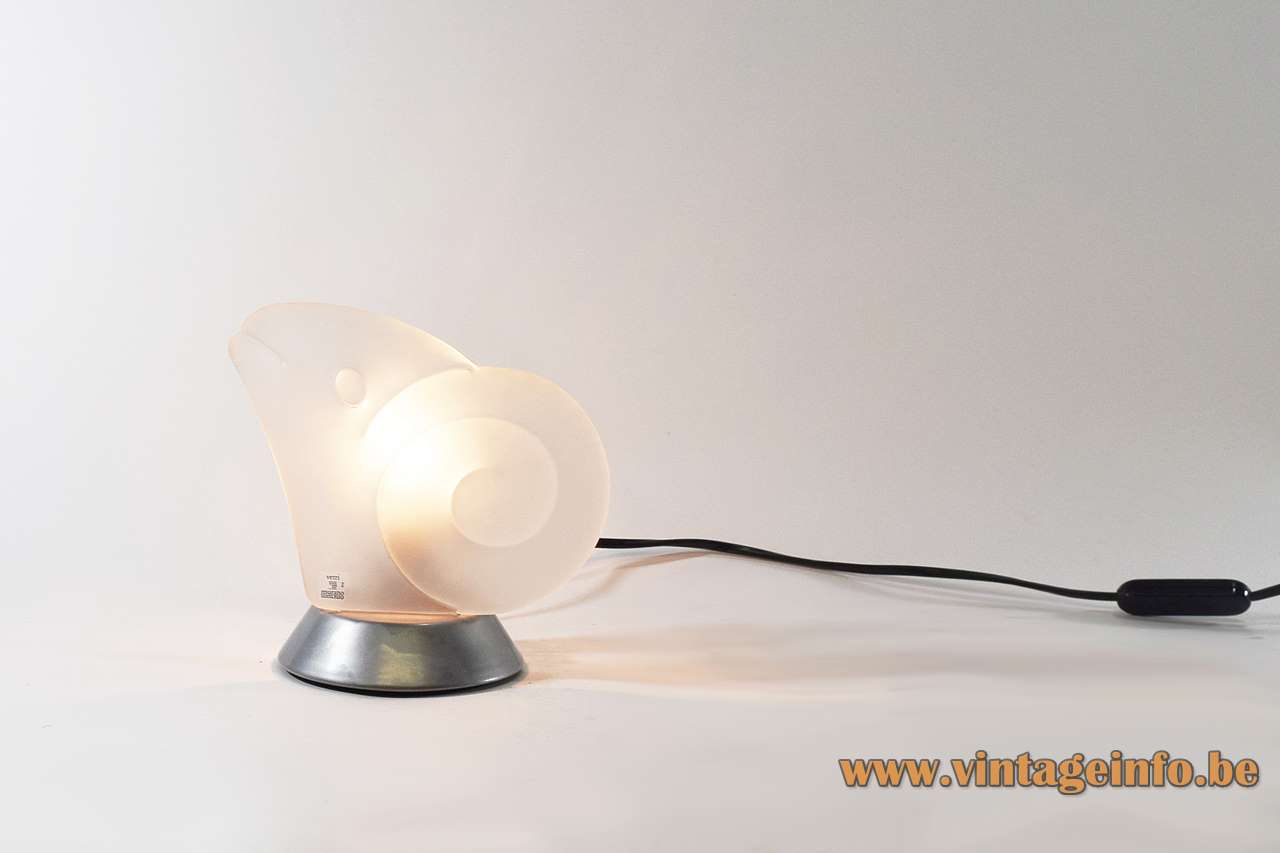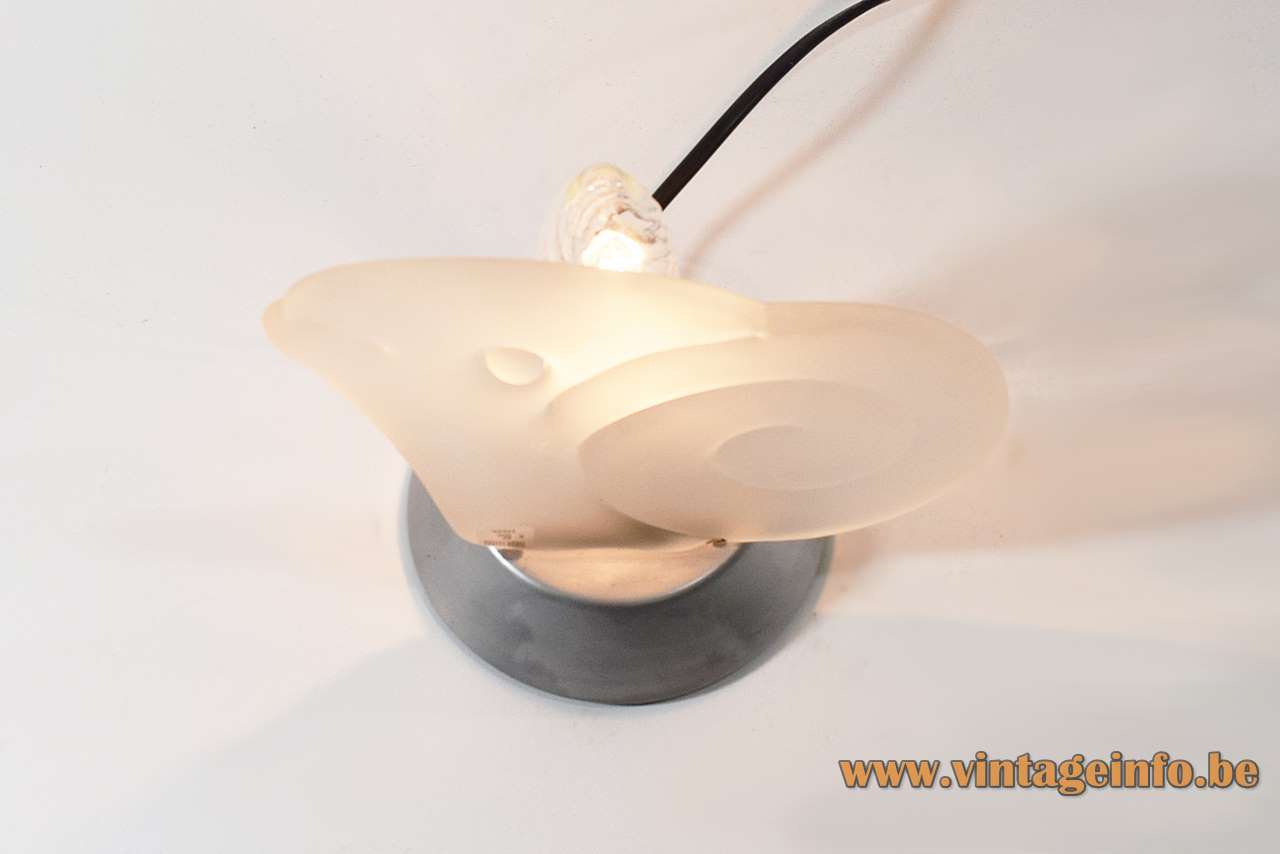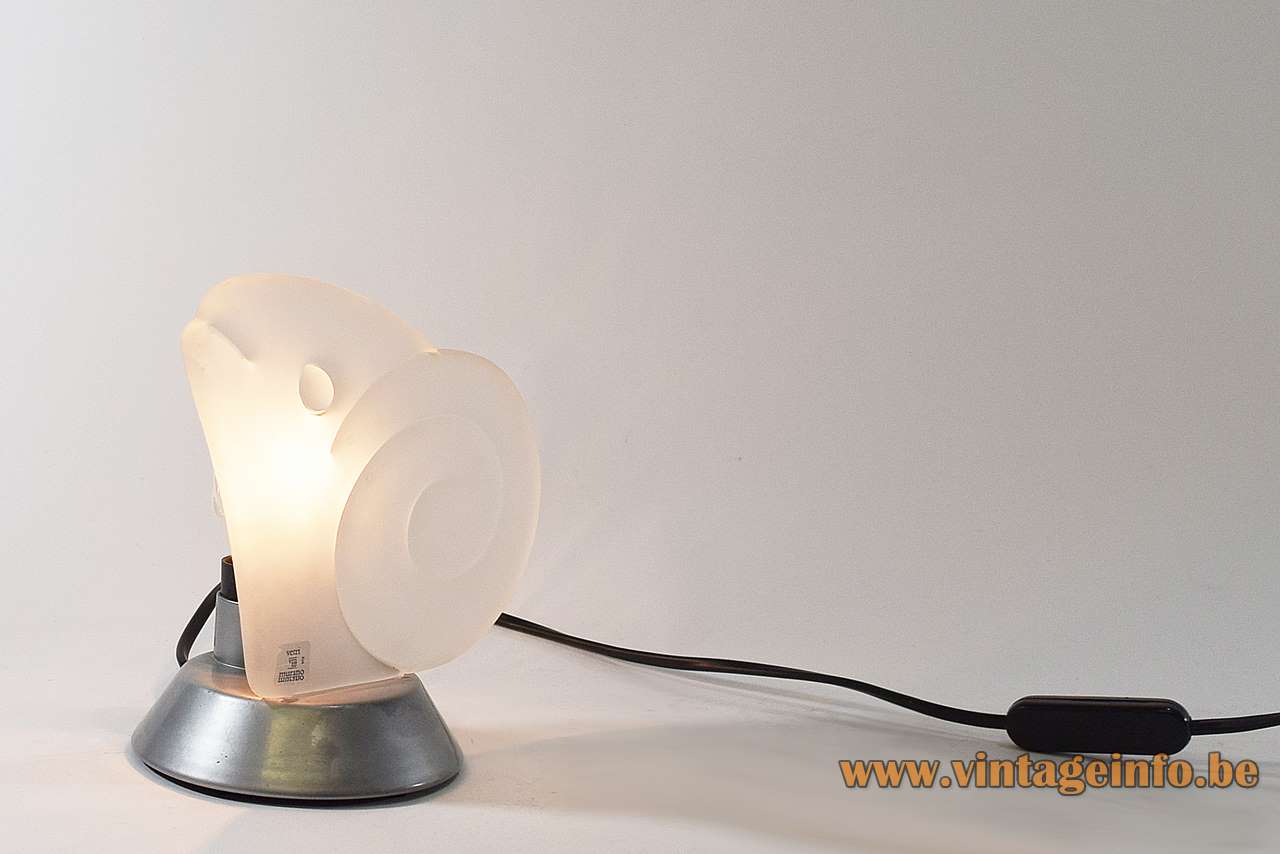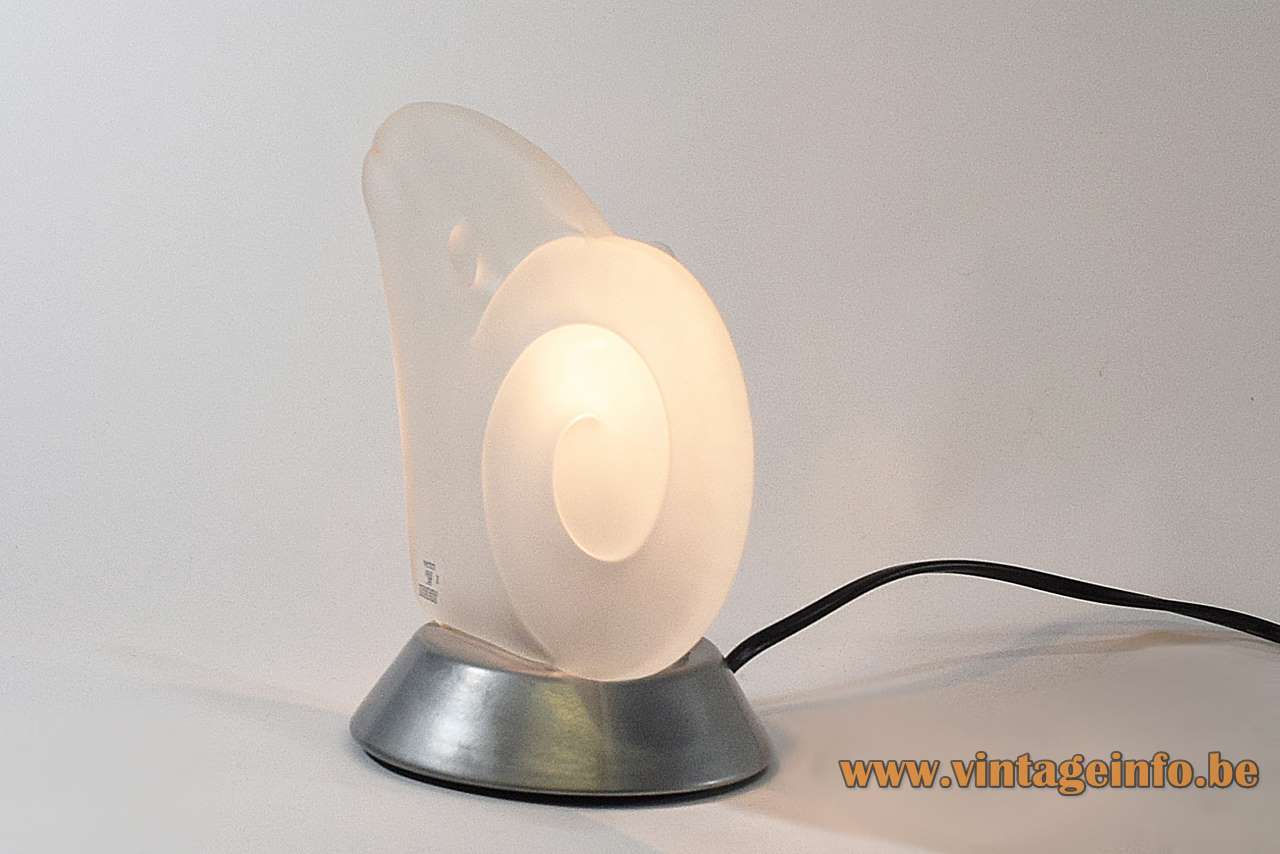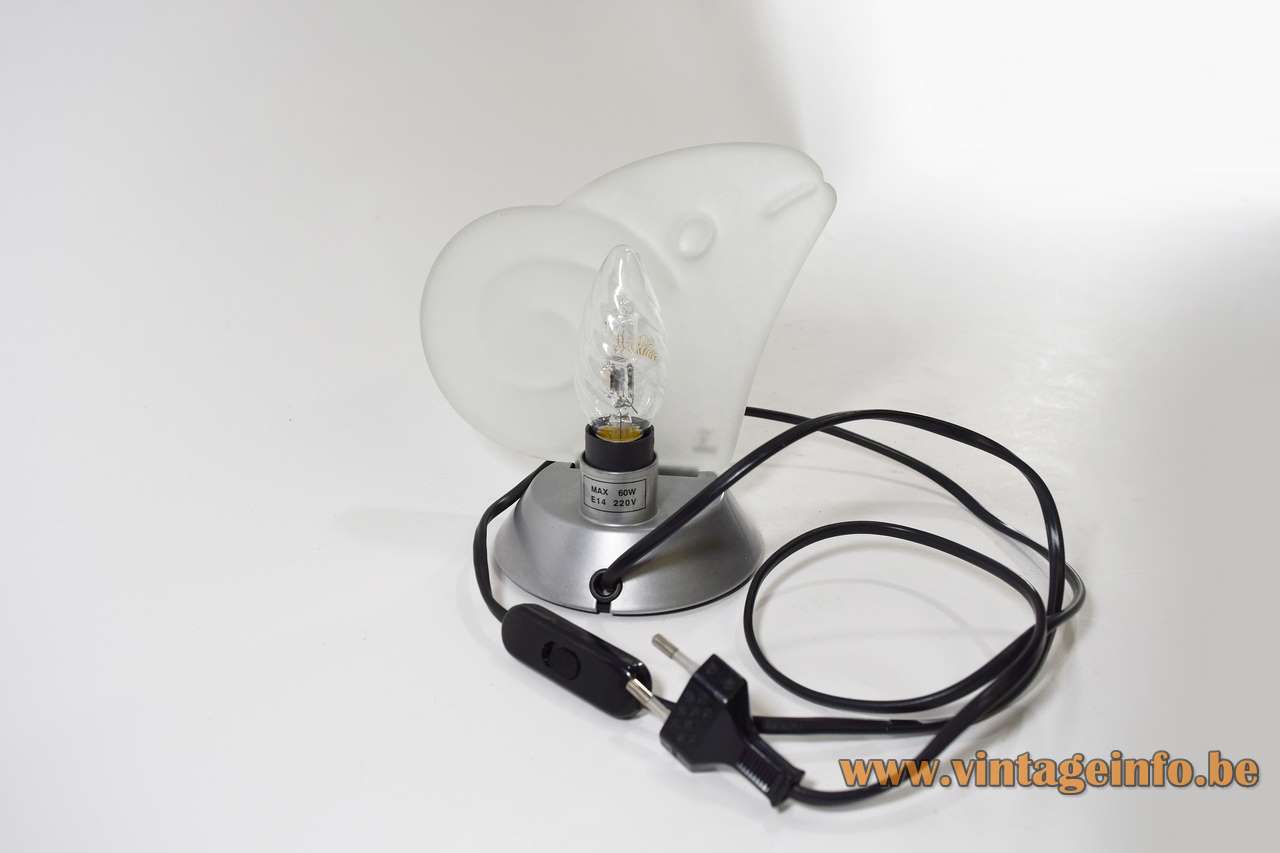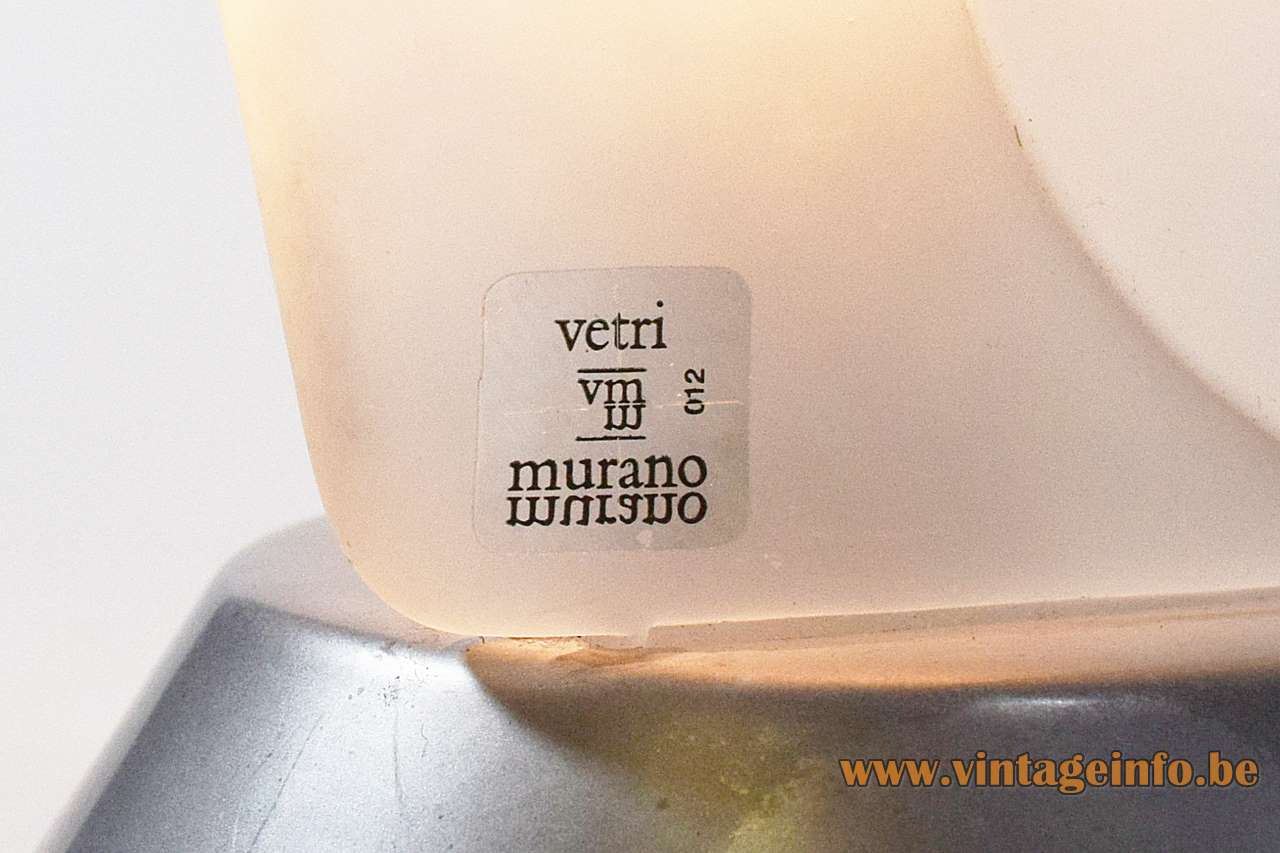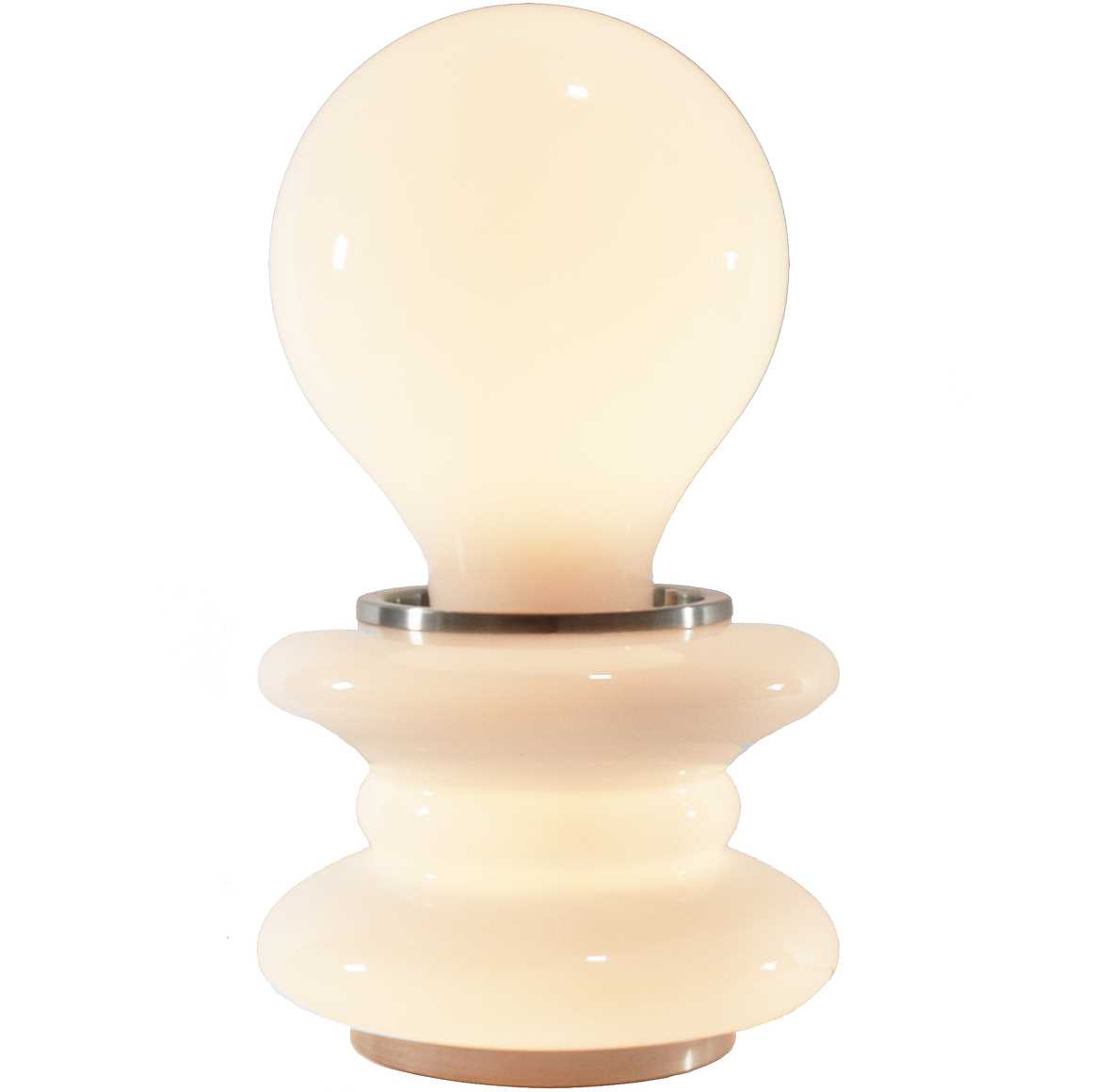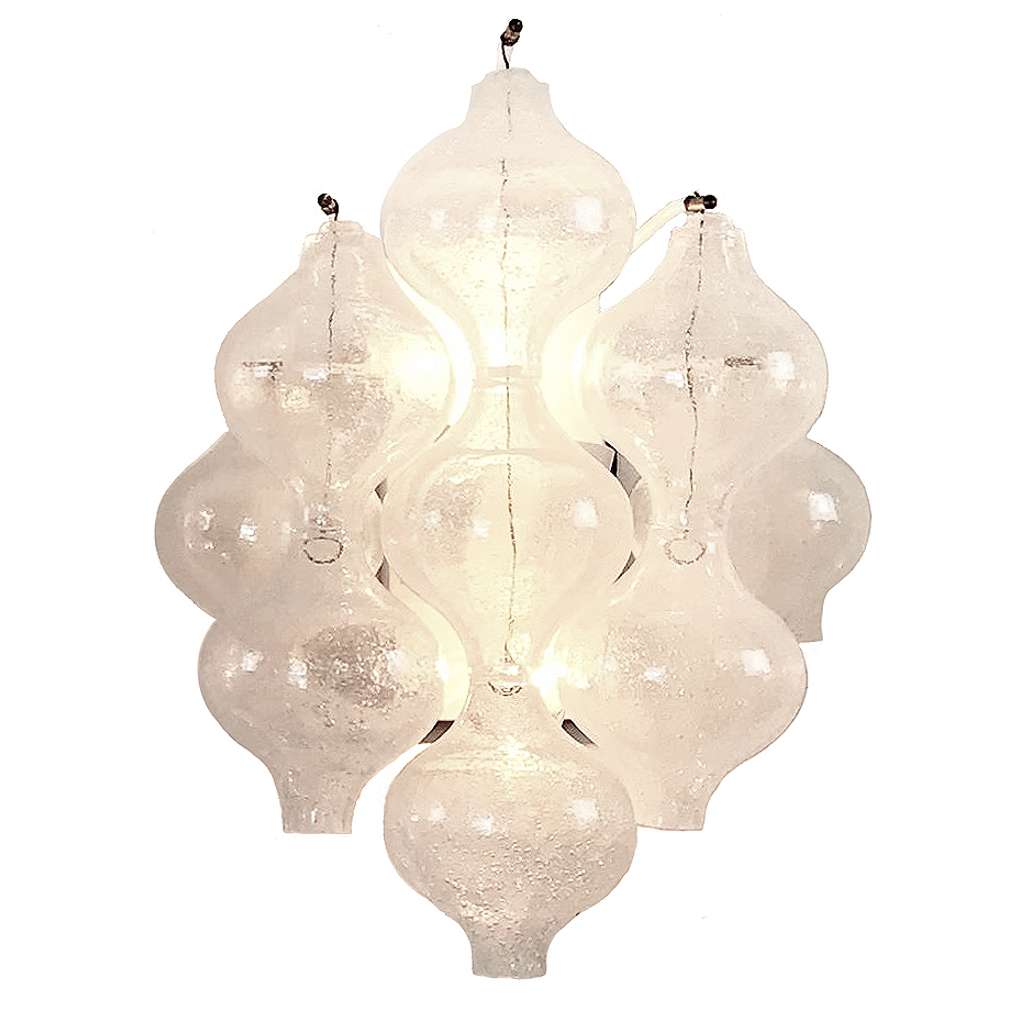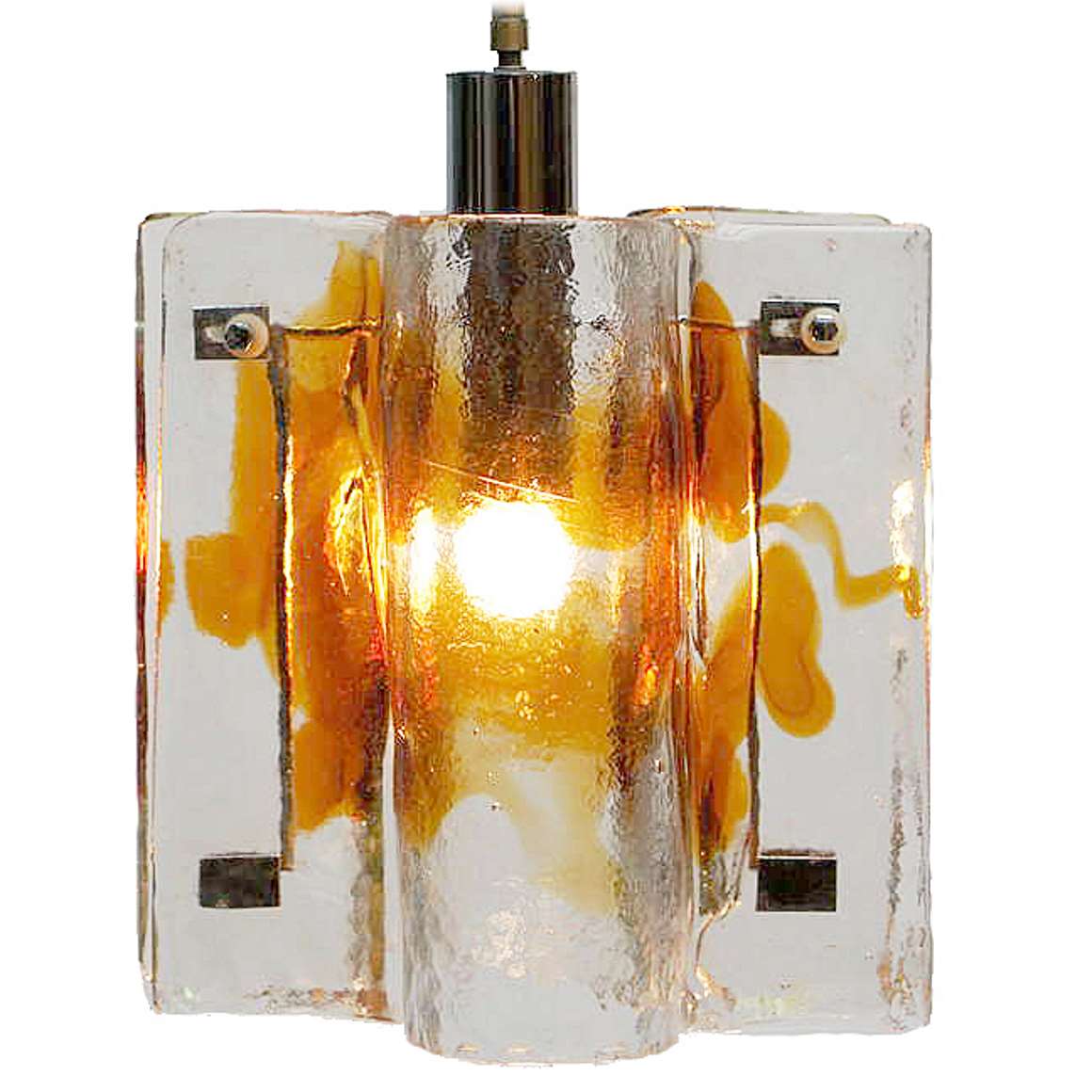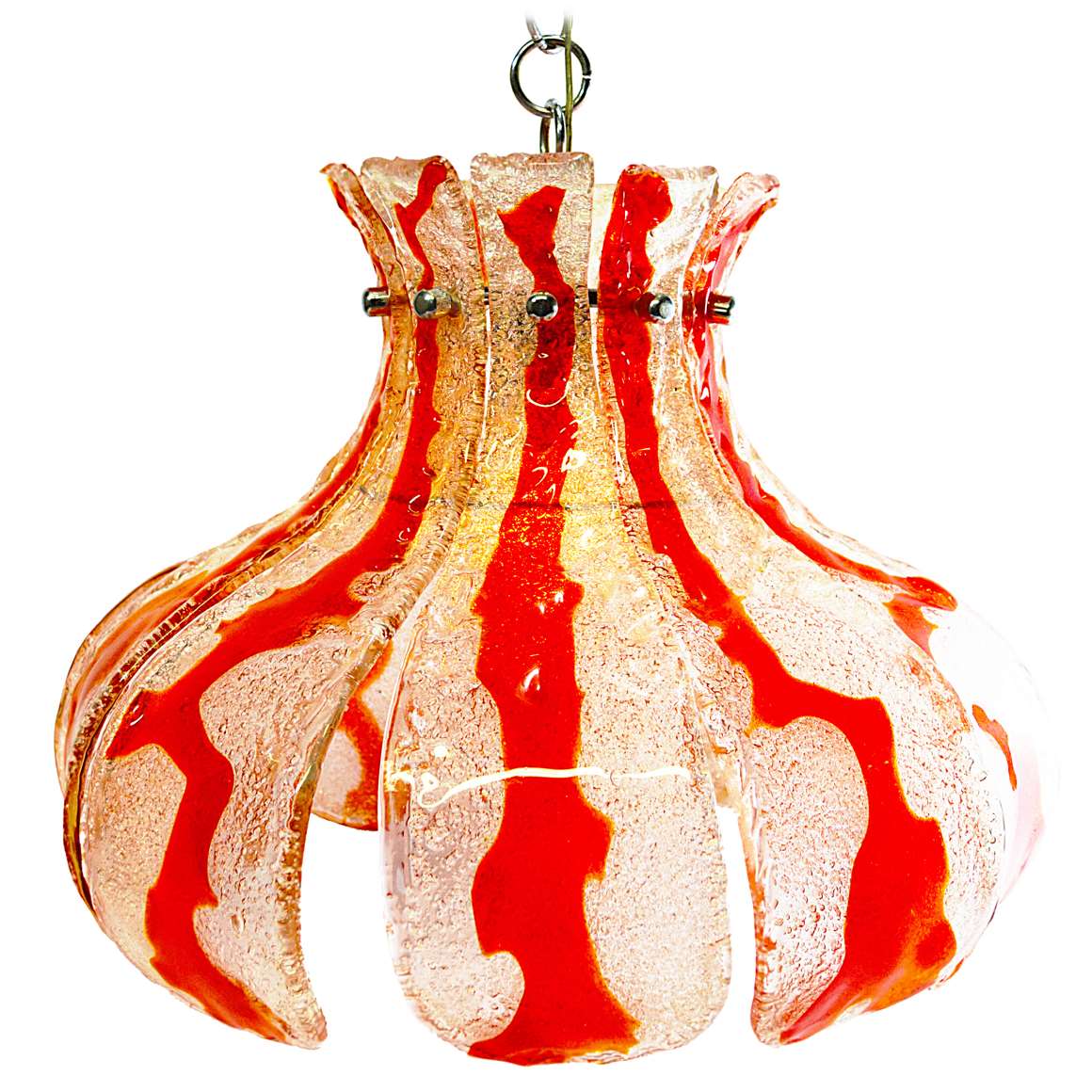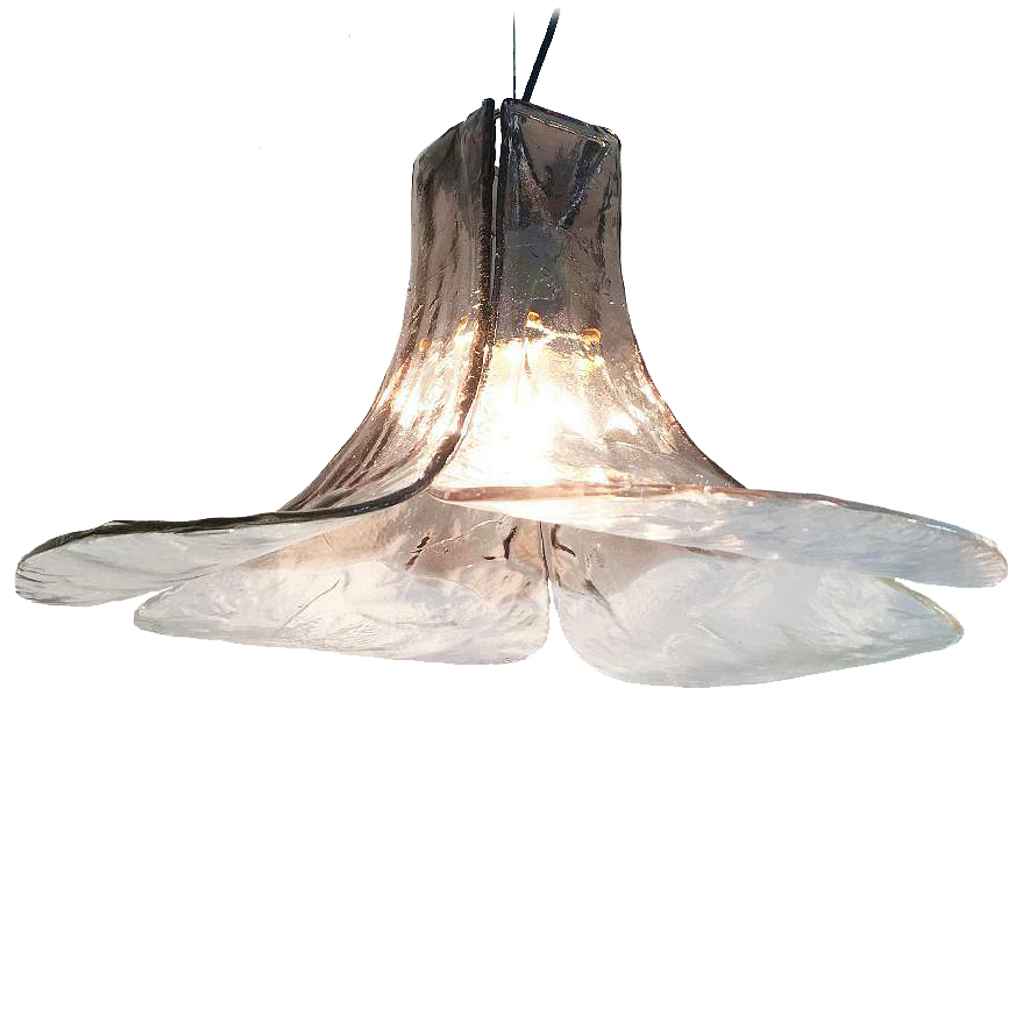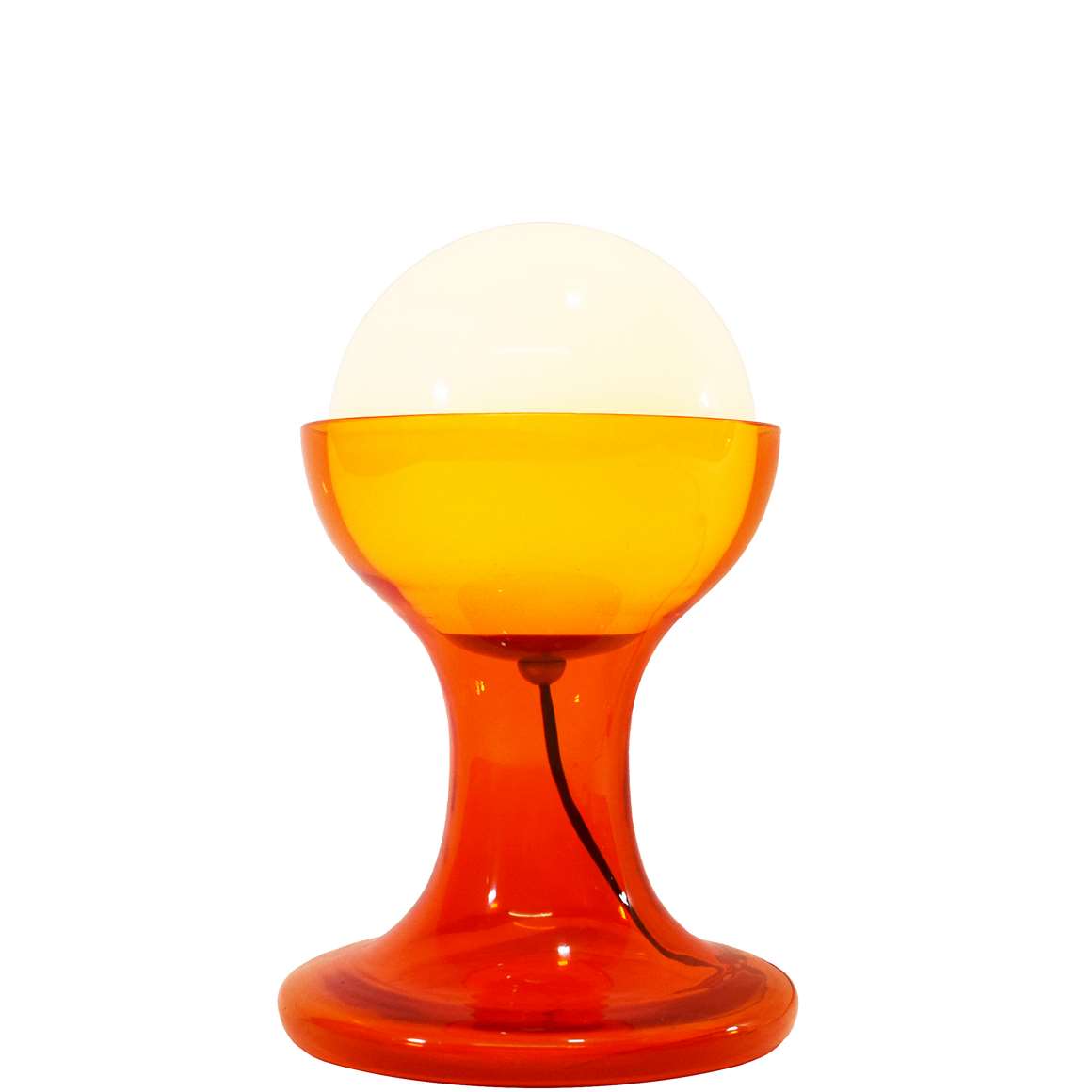Carlo Nason expo – Triennale Milan 2015
Carlo Nason – 2019 Interview
VLM Components
All the electric parts were made by VLM Components in the 1990s. The company was founded in 1945 in Buccinasco, a small village near Milan, Italy. The company became famous for the switches they produce since 1968, designed by Achille Castiglioni. You can find them over here. VLM is part of the Relco Group, founded in 1967. Today they are the owners of the brands Relco, Leuci, Relco Lighting, VLM and Segno.
Links (external links open in a new window)
I Muranesi – Interviews with great Murano glass artists and designers
Vintageinfo
Many thanks to I Muranesi for the Carlo Nason interview.
Carlo Nason Zodiaco Table Lamp
Materials: Round silver painted metal (iron) conical base. Black painted metal cover on the bottom of the base. Frosted hand blown Murano glass Capricorn on top. Plastic E14 socket.
Height: 17 cm / 6.69”
Width: 16,5 cm / 6.49”
Base: ∅ 11 cm / 4.33”
Electricity: 1 bulb E14, 1 x 60 watt maximum, 110/220 volt.
Anytypeof light bulb canbeused, not a specific one preferred. For this setup a clear twisted bulb was used.
Period: 1990s.
Designer: Carlo Nason.
Manufacturer: iTRE, Via delle industrie 16/c, Salzano, Italy
Other versions: This Carlo Nason Zodiaco table lamp exists in 12 versions, one for each zodiac sing. Other lamps with the same base also exists. You can find them with a red heart, a moon and so on.
Often said that these lamps are made in the 80s, but those are false assumptions. They all have the European CE marking. It became mandatory in the early 90s.
iTRE
iTRE was founded in 1975 by Roberto Ragazzi and associates in Salzano, near Venice, Italy. From the beginning, the company positioned itself as a forward-looking brand, constantly updating its collection in line with evolving tastes and markets. Its identity was defined by experimentation with a wide range of materials – glass, metal, plastics, textiles, and composites – and by an avant-garde design language that balanced technology, quality, and creativity.
Beyond lighting, iTRE also explored architectural uses of glass, producing hot-worked Murano glass tiles that reflected the centuries-old traditions of Venetian craftsmanship. These tiles offered a luminous, decorative medium for walls, doors, and large installations, perfectly blending heritage with modern applications.
In 2002, iTRE became part of FDV Group S.p.A., a holding created to bring together several Italian lighting brands under one umbrella. FDV’s portfolio included Leucos (founded 1962), Alt Lucialternative (1963), Luxit (1967), Aureliano Toso Illuminazione (1938), Murano Due (1982), and Gallery Vetri d’Arte, each with its own strong identity rooted in Murano glassmaking and contemporary design. FDV itself was eventually absorbed under the Leucos name, which remains internationally recognized.
Throughout its history, iTRE collaborated with an impressive roster of Italian designers, each contributing distinctive projects that reinforced the brand’s experimental spirit. Designers associated with iTRE are, among others: Federico Codato, Ugo La Pietra, Sergio Asti, Alessandro Lenarda, Giusto Toso, Gianni Rigo, Mauro Marzollo, Federica Marangoni, Luciano Cirpi, Carlo Nason, Guidi Rosati, Angelo Bazzi and Maria Caffuri.
Carlo Nason
Carlo Nason was born in Murano in 1935 into one of the island’s oldest glassmaking families. His father, Vincenzo Nason, founded V. Nason & C., where Carlo was introduced to the most refined glassmaking techniques.
Although his formal studies were in economics and administration, his true education came at the furnace, where he mastered traditional skills while developing a passion for design, photography, and graphics. His earliest works from the late 1950s are still preserved today in the collection of the Corning Museum of Glass, New York.
In the 1960s he began working formally for the family glassworks but quickly expanded beyond it, collaborating with other Murano workshops and pursuing a distinctly modern vision. His designs combined craftsmanship and innovation, balancing Murano traditions with the clean forms and modularity of contemporary design.
Collaboration with AV Mazzega
From the mid-1960s until the 1980s, Carlo Nason designed an entire generation of lamps for AV Mazzega. Under Gianni Bruno Mazzega ’s direction, he enjoyed extraordinary creative freedom. He explored vetro in piastra, opaline, pulegoso, and layered glass, developing the poetic, diaphanous lighting effects that became his signature.
Unlike many designers, Nason oversaw the entire production process – from drawings to kiln work and metal fittings – ensuring absolute precision. These years produced numerous icons of Italian design, today regarded as cornerstones of Mazzega’s history.
Collaboration with Kalmar
In the early 1970s, AV Mazzega introduced Nason to Kalmar Franken KG in Vienna. Kalmar, with its tradition of working closely with architects, was then expanding into modern glass lighting. Nason’s minimalist and modular approach proved an ideal match.
For Kalmar he designed systems such as RS-System, Meander and Mare, conceived for both domestic interiors and large-scale architecture. Even more enduring were his decorative series – the famous Tulipan, Citrus, Granada, Sierra, Pagode and Stein collections. Produced with Murano glass and Kalmar’s metal craftsmanship, these ranges became commercial successes across Europe, cementing Kalmar’s reputation in international lighting design.
Other collaborations
Beyond AV Mazzega and Kalmar, Nason designed for Vistosi, De Majo, Leucos, Alt Lucialternative, Gallery Vetri d’Arte, Murano Due, Selenova, Linea GB, IVL, and Gruppo Firme di Vetro, among others. With Lumenform, he created the famous Sona pendant lamp (1970), later reissued by ITre, for which he also designed the popular Opera lamp in the 1990s. For Murano Due, his creations included Bolero, Contessa, Chimera, and Ghost, later entering the Leucos catalogue. At de Majo, he developed the Boccioni vases and the Bilbao lamp, proving his ability to work with materials beyond glass.
His versatility extended beyond lighting: he designed ceramics for Baldelli, ski boots for Garmont, perfume flacons for fashion designers, and served as lighting consultant for Casinos Austria International in Vienna.
Photography and exhibitions
Equally passionate about photography, Nason won numerous competitions during the 1960s and 70s. His images, often commissioned for Murano catalogues, reflected the same modern sensibility as his lamp designs.
In 2015, on his 80th birthday, the Triennale di Milano dedicated a solo exhibition to his work, recognizing him as one of Murano ’s most important postwar designers. His creations are held in major museum collections, including the Museum of Modern Art (MoMA) in New York, the Triennale Design Museum in Milan, and the Corning Museum of Glass in New York, which owns an extensive collection of his work.
Legacy
Carlo Nason has always been a discreet figure, avoiding the spotlight, yet his designs have reached a wide audience—from museum halls to television screens in the 1980s. His career represents the very best of Italian lighting design: rooted in Murano ’s heritage yet always open to innovation, modernity, and international collaboration.
